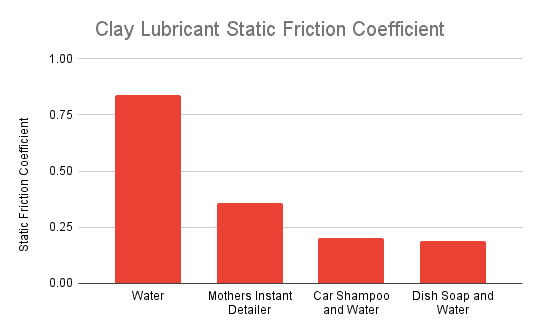
When it comes to using a clay bar on your car, making sure your paint is properly lubricated is important. Do you really need to buy expensive clay lubricants to achieve this?
As a general rule when clay baring a car, it is safe to use a mixture of car shampoo and water as an alternative to clay lubricant. It is also safe to use a dish soap water mixture although this may remove any waxes or sealants. Other mixtures such as water and vinegar, or just water, should not be used; as they do not add any lubrication properties. Store-bought clay lubricants are always a safe option, but not deemed necessary.
Want to know more about alternatives to buying clay lube? Keep reading to learn everything you need to know before clay-baring your car!
Clay Lube Alternatives
When it comes to clay lube, the main purpose is to minimize the friction between the clay and your paint. This will reduce the chances of scratching but still allows debris to get picked up. If you are looking for a cheaper alternative to store-bought clay lube, you’ve come to the right place.
As stated above, I recommend a mixture of car shampoo and water when claying your car. To make this, add a squeeze of car shampoo in a spray bottle with water and mix. Once applied to the paint, this mixture should allow your clay to glide on your paint, without sticking.
A mixture of dish soap and water can also be used and is recommended before polishing. Following a protectant stripping wash, using dish soap as a clay lubricant can help remove any excess wax or protectant. For this reason, dish soap should not be used if you want to keep any waxes or sealants on your car.
Some quick detail sprays can also be used as a lubricant. I only recommend using these if they came with the clay bar, or if they are your only option. Not all quick detailing sprays have the proper lubrication needed to prevent scratching. Only use a quick detailer as clay lube if the product’s instructions say it can be used as a clay lubricant.
Clay Lube Alternatives Friction Test
As stated above, a good clay lubricant decreases the friction between the clay and your paint. I performed a simple experiment to test how well each clay lube alternative performs. Using a slab of glass, each lubricant was applied to the glass and clay. The clay was then placed on the glass, and the angle of the glass was increased until the clay began the slide. Using the angle at which the clay starts to slide and the weight of the clay (100g), I was able to calculate the coefficient of friction for each lubricant (results below).

This chart shows that water has a high coefficient of friction, and dish soap with the lowest. I was surprised to see the instant detailing spray provided in the clay bar kit with the second-highest coefficient of friction.

While dish soap and water decreased the coefficient of friction the most, I recommend using a mixture of PH-balanced car shampoo and water. As stated before, dish soap can potentially remove any protection layers such as waxes and sealants.
Can You Use a Clay Bar Without Lubricant?
I have often seen people asking if clay lube is needed. Let’s take a look at why lubricant is important, and what it does.
Lubricant is necessary when claying a car. Lack of proper lubrication can lead to scratching and scaring of your car’s paint. It is important to use a clay lubricant or car shampoo, and a water mixture to decrease the friction between surfaces, preventing scratches.
Proper lubrication decreases the friction between your paint and contaminants that may be caught in the clay bar. This lowers the chances of scratching your paint when clay baring. Below is a diagram showing the lubrication layer, acting as a barrier protecting your paint.
Many people believe that using a clay lubricant may lower the amount of debris that is removed from the paint; this is not true. Using improper or no lubricant will only scratch your paint, as the lubricant does not affect the clay by catching the rough edges of debris.
How Do You Lubricate Clay?
As stated above, when using a clay bar proper lubrication is key to protecting your paint. Here is how to properly lubricate your paint for clay baring.
To lubricate your paint for clay baring, begin by spraying a two-foot by two-foot area of paint with your lubricant. Apply enough lubricant for it to begin running off the paint. Then spray your clay with your lubricant and begin claying. Proper lubricant should result in a low-friction gliding of the clay bar over the paint. If the clay bar is catching or feels like it is dragging on the paint, add more lubricant.
When claying, I recommend breaking the work up into two-foot by two-foot sections. This ends up being bout half a door, or a quarter of the hood at a time. This allows you to focus on making sure there is proper lubrication and prevents the lube from drying on the paint.
When applying the clay lube to the paint of your car, you should spray the clay lube onto your paint until it begins to run off. This will ensure that there is enough lubricant to properly break the friction between the clay and your paint. For the best lubrication, I recommend spraying your clay bar with clay lube before beginning.
If properly lubed the clay should glide on top of the car’s paint with little force needed. If the clay feels like it is rubbing on the paint, or catching, you should apply more lubricant. This friction feeling is the clay rubbing into your paint, and any debris in the clay scratching your paint.
